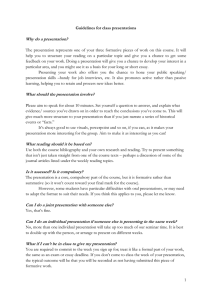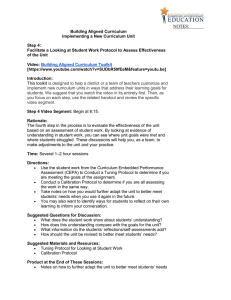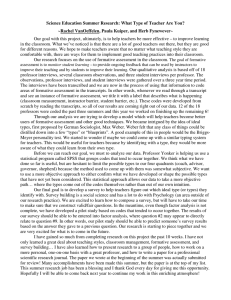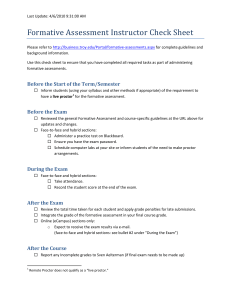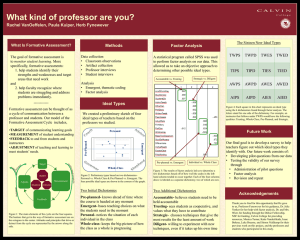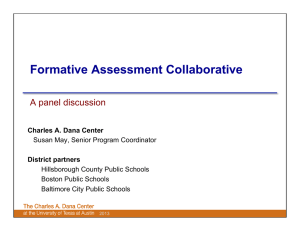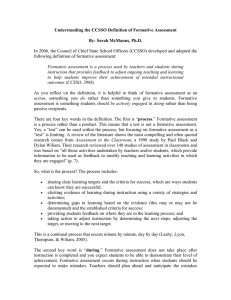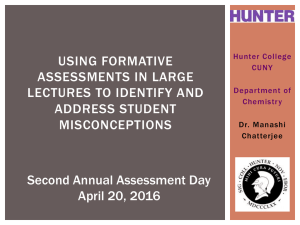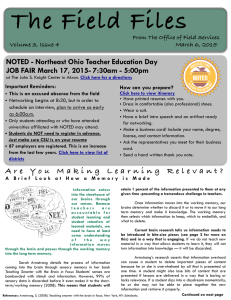Helping Students Take Ownership for Their Learning
advertisement
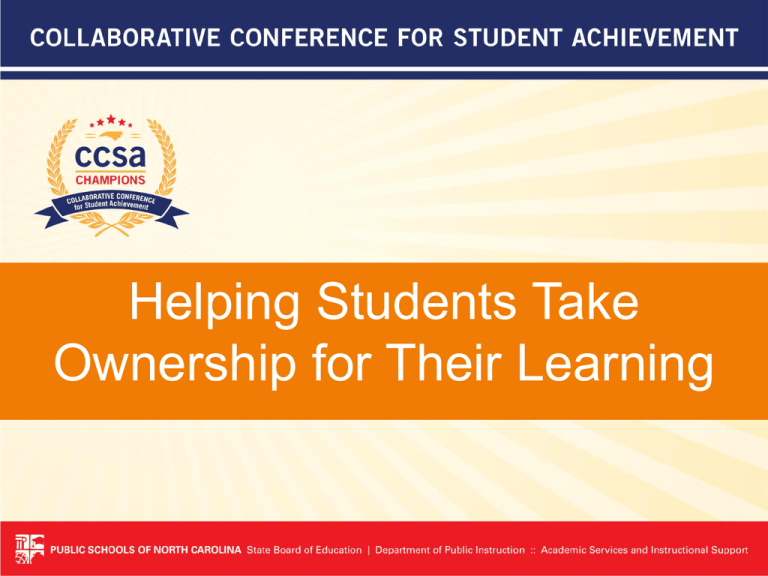
Helping Students Take Ownership for Their Learning Learning Targets At the end of this session, you should be able to state the following: I can explain the role of the student in the learning process. I can explain the role formative assessment plays in helping students take ownership for their learning. I can apply strategies that were presented in this session to help my students improve their metacognition. “Students interpret the feedback we give them to decide whether they have hope of future success, whether the learning is worth the energy it will take to attain it, and whether to keep trying. If students conclude that there is no hope, it doesn’t matter what the adults decide. Learning stops.“ - Dr. Richard Stiggins, Five Myths and Their Consequences “Smart is not something you are, it is something you get.” Dylan Wilam, 2012 https://www.youtube.com/watch?v=1iD6Zadhg 4M LEARNING All theories of learning include four regulatory processes (Allal, 2010): 1. goal setting 2. monitoring progress toward the goal 3. interpretation of feedback derived from monitoring 4. adjustment of goal-directed action FORMATIVE ASSESSMENT Formative assessment is a process used by teachers and students during instruction that provides feedback to adjust ongoing teaching and learning to help students improve their achievement of intended instructional outcomes. The Council of Chief State School Officers (CCSSO, 2008) 4 Key Words: Process During Feedback Students Formative Assessment is most useful for students and teachers and much less useful at the LEA, State, and Federal Levels. Student/Teacher Parent School/ Principal LEA/ Superintendent State Accountability Federal Accountability Usefulness of Formative Assessment Conceptual Similarities Self-regulated Learning Formative Assessment • What am I doing? • Where am I going? • Why am I doing it? • Where am I now? • How does it help me? • How to close the gap? – Schoenfeld (1987) • Hattie and Timperley (2007) 11 Clear Learning Targets Subparts of the objective One or two lessons Student friendly language––“I can” statements Misconceptions addressed Criteria for Success Process Criteria: Identify what students will need to do to be successful Product Criteria: Provide an understanding of what quality does and does not look like Consider writing each expected learning outcome as an “I will” statement Descriptive Feedback • Describes the qualities of the learning in relation to the learning target and criteria for success • Makes observations about the learning process and strategies that will help the student improve • Fosters self-efficacy by drawing connections between student work and his/her efforts When, What, and How • Timely: Needs to be close to when learning first took place • Actionable: Try to focus on one aspect of quality at a time • Provide time for students to engage in self-reflection • Respectful – nonjudgmental Characteristics of Good Student Feedback by Gavan Watson https://www.youtube.com/watch?v=Huju0xwNFKU Questions
